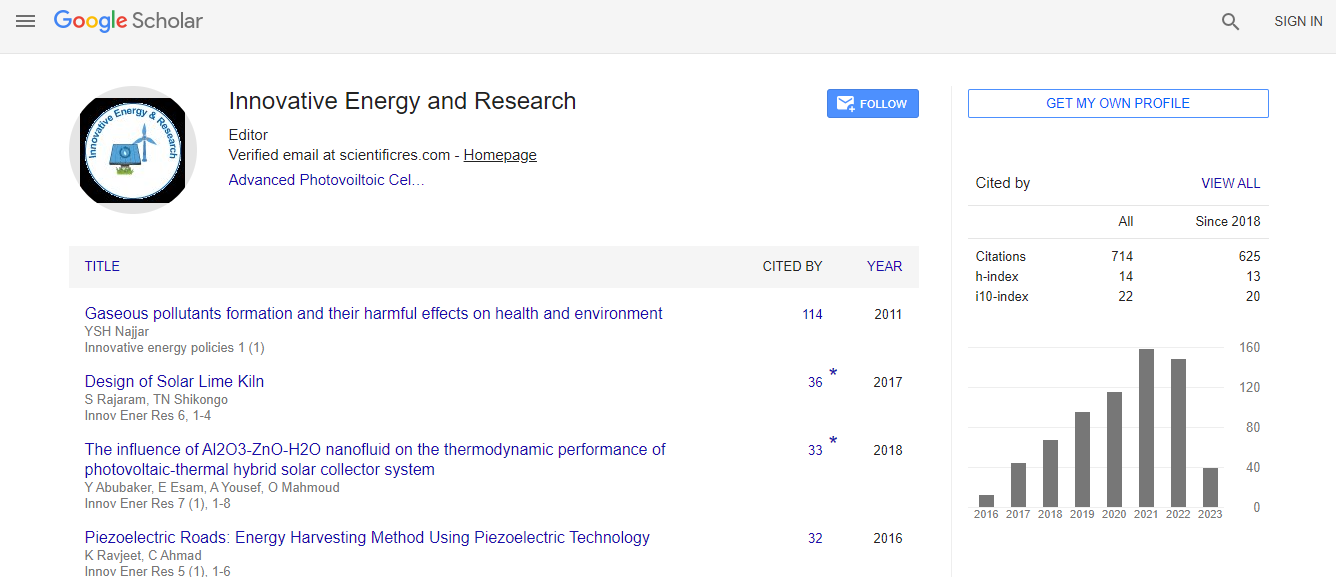Our Group organises 3000+ Global Conferenceseries Events every year across USA, Europe & Asia with support from 1000 more scientific Societies and Publishes 700+ Open Access Journals which contains over 50000 eminent personalities, reputed scientists as editorial board members.
Open Access Journals gaining more Readers and Citations
700 Journals and 15,000,000 Readers Each Journal is getting 25,000+ Readers
Google Scholar citation report
Citations : 712
Innovative Energy & Research received 712 citations as per Google Scholar report
Innovative Energy & Research peer review process verified at publons
Indexed In
- Google Scholar
- Open J Gate
- Genamics JournalSeek
- RefSeek
- Hamdard University
- EBSCO A-Z
- Publons
- Euro Pub
- ICMJE
Useful Links
Recommended Journals
Related Subjects
Share This Page
New tools for selectively improving strains of sugar kelp for food and fuel
Joint Event on 2nd International Conference on Renewable Energy and Resources & Energy Materials and Fuel Cell Research
Scott Lindell, E Fischell, S Augyte, D Bailey, J L Jannink and G C Yarish
Woods Hole Oceanographic Institution, USAUniversity of Connecticut, USACornell University, USA
Posters & Accepted Abstracts: Innov Ener Res
Abstract
As a part of ARPA-E’s MARINER program, a team of scientists and entrepreneurs is pursuing a selective breeding program to improve the productivity and composition of sugar kelp, Saccharina latissimi, which could serve as feedstock for biofuels. ARPA-E’s and our goal is to develop tools and a pathway toward low-cost (< $100/DWT) seaweed feedstock that could supply 10% of US transportation fuels. Current markets are human and animal foods. Our project will develop several complementary tools to reach this objective. To facilitate the high-throughput creation of family crosses, we are developing cell sorting methods to efficiently isolate and clone gametophytes. USDA/Cornell and others will employ PacBio and Illumina sequencing to create a deepsequenced reference genome and establish a variant catalog for our founding populations and families. WHOI, UCONN and contract farmers will oversee field trials of 144 families (from 12 different ‘strains’) planted in triplicate plots on two farm sites (nearshore and offshore) over two growing seasons. The resulting family phenotypic data will be associated with genetic markers, and we will identify variants significantly associated with primary productivity and composition traits. A goal is to develop methods to predict offspring performance based upon genotype and breeding values of parents as a shortcut around extensive and expensive field testing. A separate ARPA-E project will test the potential labor-saving use of WHOI’s autonomous underwater vehicles and sensors for conducting nutrient, acoustic, and optic measurements of macroalgae plots. These will be compared to conventional hands-on field measurements. Ultimately our goal is to develop sugar kelp with the improved composition for use as a bioenergy feedstock.Biography
E-mail: slindell@whoi.edu

 Spanish
Spanish  Chinese
Chinese  Russian
Russian  German
German  French
French  Japanese
Japanese  Portuguese
Portuguese  Hindi
Hindi 
